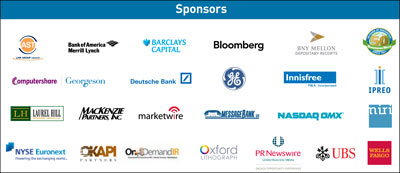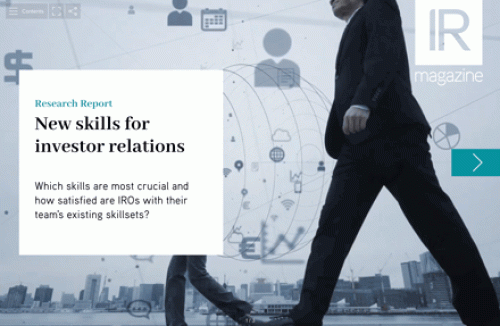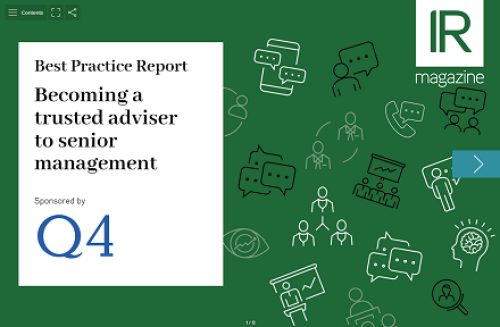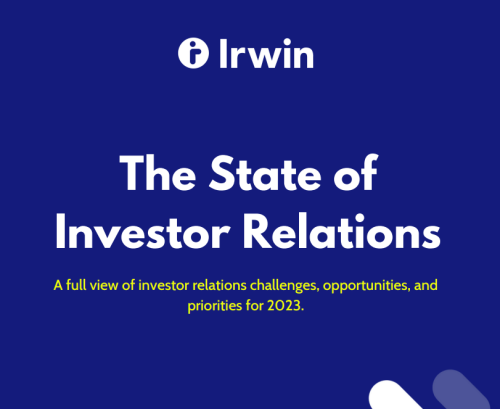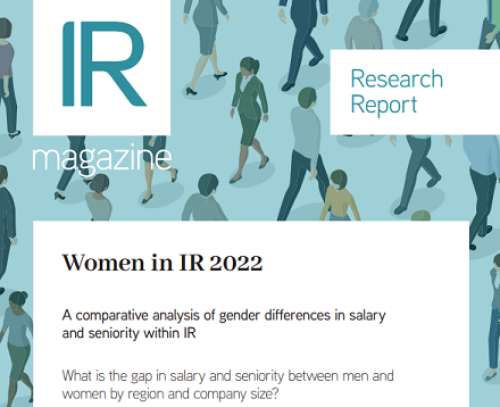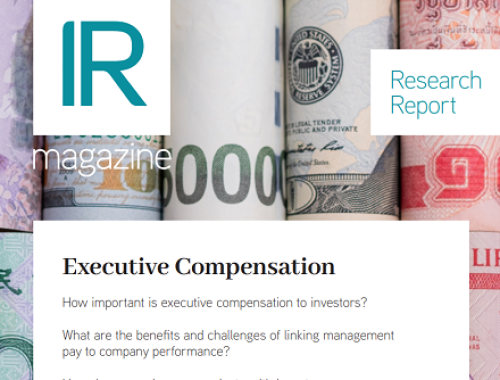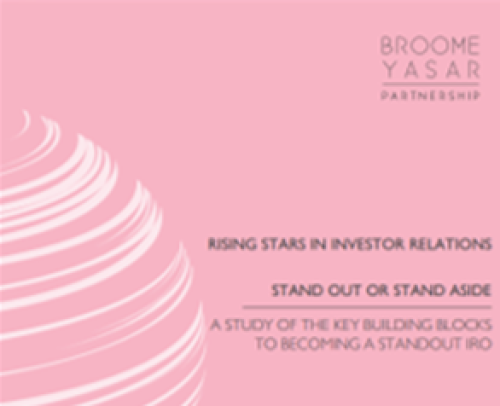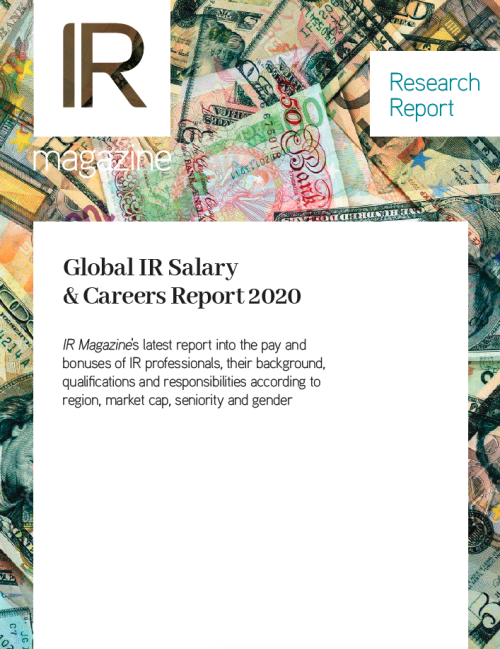This year’s IR Magazine US Award winners are mavericks who made up their own minds about best practice investor relations
When Covidien was planning its IPO as part of the breakup of the old Tyco International, Cole Lannum started with a blank slate. ‘How do we want to put this IR team together? How should we do things?’ the IR chief queried. ‘We had no history, no inertia, no tradition to worry about. On every single point, we thought about trying something different.’
By the time Covidien went public in 2007 as the largest healthcare IPO in history, Lannum, a former portfolio manager and analyst with 17 years’ experience on the buy side, had carved out his own model that diverged – sometimes controversially – from many of his large-cap med-tech peers: no quarterly EPS guidance, no preannouncements and little in the way of targeting.
With sales of nearly $11 bn a year and a market cap of around $26 bn, Covidien’s IR team is tiny: just Lannum plus an IR director who rotates through every couple of years. Lannum even went against conventional best practice and did away with the quiet period.
‘We have a simple philosophy: IR is a 365-days-a-year, 24/7 job,’ he explains. ‘That means always being out there, always available to answer questions from investors.’
His renegade risks have been vindicated: even after Covidien’s troubles of the last year as it faced uncertainty around US healthcare reform and austerity in Europe’s state-run systems, not to mention the large, expensive and not very popular acquisition of ev3, Covidien was nominated for seven awards – more than any other company – and it won four, including the grand prix and best IRO award for Lannum.
Looking ahead, Lannum plans to do more outreach beyond the US and Europe, particularly to Asia ex-Japan. Covidien has growth in terms of products and investments in emerging markets, so Lannum will host meetings for US and foreign investors in new parts of the world. Another challenge for 2011 is a change in CEO: Joe Almeida, currently head of Covidien’s medical devices business, will take over from Richard Meelia in July.
Back in fashion
Ken Ohashi is another newcomer to the IR Magazine US Awards whose independent-minded approach to IR saw his company through a rough year.
Aéropostale, a teen fashion chain with a market cap over $2 bn, had a strong growth record since its 2002 IPO but ran into a slowdown in the second half of 2010. No hiding, no excuses. ‘We laid out a game plan very quickly. We made sure it was clear, and we kept reiterating it,’ Ohashi says. 
Ken Ohashi, Aéropostale
He copes with 30 sell-side analysts whose ratings run from buys to four sells. ‘We try to do at least one event with each analyst,’ he says. ‘As for the guys with the sells, I pull out the emotional piece of the story and recognize it as an opportunity for them to upgrade. I pretty aggressively spend more time with them and find out how to make them comfortable.’
After starting life as a square footage growth story, Aéropostale ‘upped the fashion quotient’ but portfolio managers were slow to catch on, so Ohashi started doing a big annual analyst day focused almost entirely on products and featuring executives like the chief design officer and head of sourcing.
‘We really changed people’s minds,’ he notes. ‘Even when business started to slow down last year, no one thought it was a brand issue; people saw it was more a competitive issue.’
In the midst of that market pressure, Ohashi had to deal with three CEO transitions in a single year. ‘It was pretty tough,’ he admits. ‘I worked hard to get Wall Street comfortable with our co-CEO model, then six months later that dissolved and I had to go back and have heart-to-hearts, really taking the time with our top 10 shareholders so they’d be comfortable with the new structure.’
Ohashi came into IR almost by accident. He joined Aéropostale from Arthur Andersen in 2002 to handle SEC reporting just as SOX was being enacted. The next he knew, his CFO was forwarding calls from sell-side analysts launching coverage. ‘I really had to ramp up my IR, learning about market logistics and processes,’ he says. In 2005 he made the formal switch to IR.
Earlier this year Aéropostale moved from reporting monthly sales to quarterly reporting. Ohashi is closely monitoring the impact while enjoying focusing his role more on business development, particularly international licensees.
Back on the winner’s podium
Unlike first-time winners Lannum and Ohashi, Carol DiRaimo is no stranger to the awards podium. She won the best IRO award four years in a row, from 2004 to 2007, when she was at Applebee’s. After moving to fast food chain Jack in the Box, the company was nominated for most progress in 2009 and 2010. This year she won best small-cap IRO and saw her firm nominated for the grand prix.
Just like Covidien and Aéropostale, however, Jack in the Box won despite rocky results, with operating estimates going down substantially along with the economy over recent years. How then does DiRaimo explain her success? ‘It’s about being responsive to folks even when your sales plummet to new depths,’ she says wryly.
Another similarity is that DiRaimo did a substantial revamp of the IR program when she arrived at her new company. The IR role at Jack in the Box had bounced around different departments, and internal feedback surveys showed no one really knew what an IRO did. DiRaimo vowed to overhaul the two most important values any IR program can have: transparency and access to management. 
Carol DiRaimo, Jack in the Box
‘I imagined I was an investor with a wish list of all the pieces of information I’d want to know about the company,’ she recalls. ‘We didn’t do it all at once, but over several quarters we started disclosing everything on my list.’
She also worked at increasing management’s visibility, especially over the last year ‘during a period when people were asking questions about the overall strategy of the company.’ During 2010 Jack in the Box did 10 investor conferences, 11 marketing trips and 10 site visits to restaurants. DiRaimo met with her top 10 shareholders a total of 28 times during the year, including 25 meetings involving the CEO and/or CFO. When things get tough, she says, ‘don’t go into your cave and hide.’
Hitting target
If ever there was proof of the return on investment of IR, it’s PDC Energy and its CEO, Rick McCullough, this year’s winner of best IR by a small-cap CEO. He came on as CFO in 2006 and was named CEO in June 2008. Within nine months the price of natural gas had fallen more than 75 percent and PDC was in trouble.
The company had largely depended on raising capital through limited partnerships, so it had just one IR staffer with no IR experience, one equity analyst covering the company, and a market cap that had fallen to $150 mn. Fast forward to 2011: three IR staff, 14 equity analysts and a market cap approaching $1 bn. 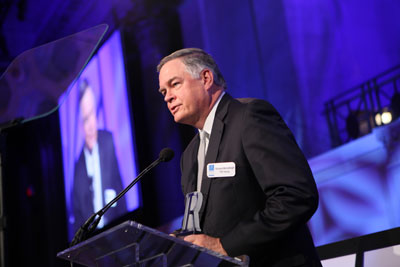
Richard McCullough, CEO, PDC Energy
You can chalk up a lot of that success to a CEO who saw value in IR and took an active part. For example, McCullough initiated two analyst days a year, one in March in New York and one in July at company headquarters in Denver. PDC went to 17 investor conferences in 2009 and 23 in 2010, with McCullough himself going to around three quarters of them.
‘The key to our success over the last year is that we were able to reinforce our messaging with our actions. It’s the linkage of our strategy with the plans we laid out to the market, and following them up,’ McCullough explains.
This CEO set his own targets for the number of large shareholders he wanted to meet with personally over the last year, and also a target for narrowing the trading differences in PDC stock. Just like with PDC’s own growth plans – and its IR program – McCullough not only met his targets, he exceeded them.
Click here to read about Mickey Foster's lifetime achievement award.
Click here for a full list of winners.
How they wonSince 1991 IR magazine has built a network of awards surveys around the world, from the US to Brazil, Greater China, South East Asia, Russia, Canada and Europe.XbInsight, IR magazine’s new research arm, identified the winners of the IR Magazine US Awards through an online survey and one-on-one interviews. With Ipreo as an exclusive partner providing contact data, XbInsight surveyed 852 investment professionals in December 2010 and January 2011. XbInsight also interviewed the IR teams themselves about the kinds of best practices that helped them achieve their high scores. The finished research, now available in a special report, the Investor Perception Study, US 2011, provides a 360-degree view of successful IR programs in the US. Voter breakdown Buy-side analyst: 204 23.9%) Portfolio manager: 92 (10.8%) Sell-side analyst: 534 (62.7%) Other: 22 (2.6%) The rankings give a normalized score for all the companies in all our investor perception studies around the world, so IR teams can compare themselves against others in their market cap range, sector and/or geography using a new custom benchmarking tool on IR Magazine. To learn more about the survey for the US awards and other research into best practices around the world, please visit: www.irmagazine.com/research. |
